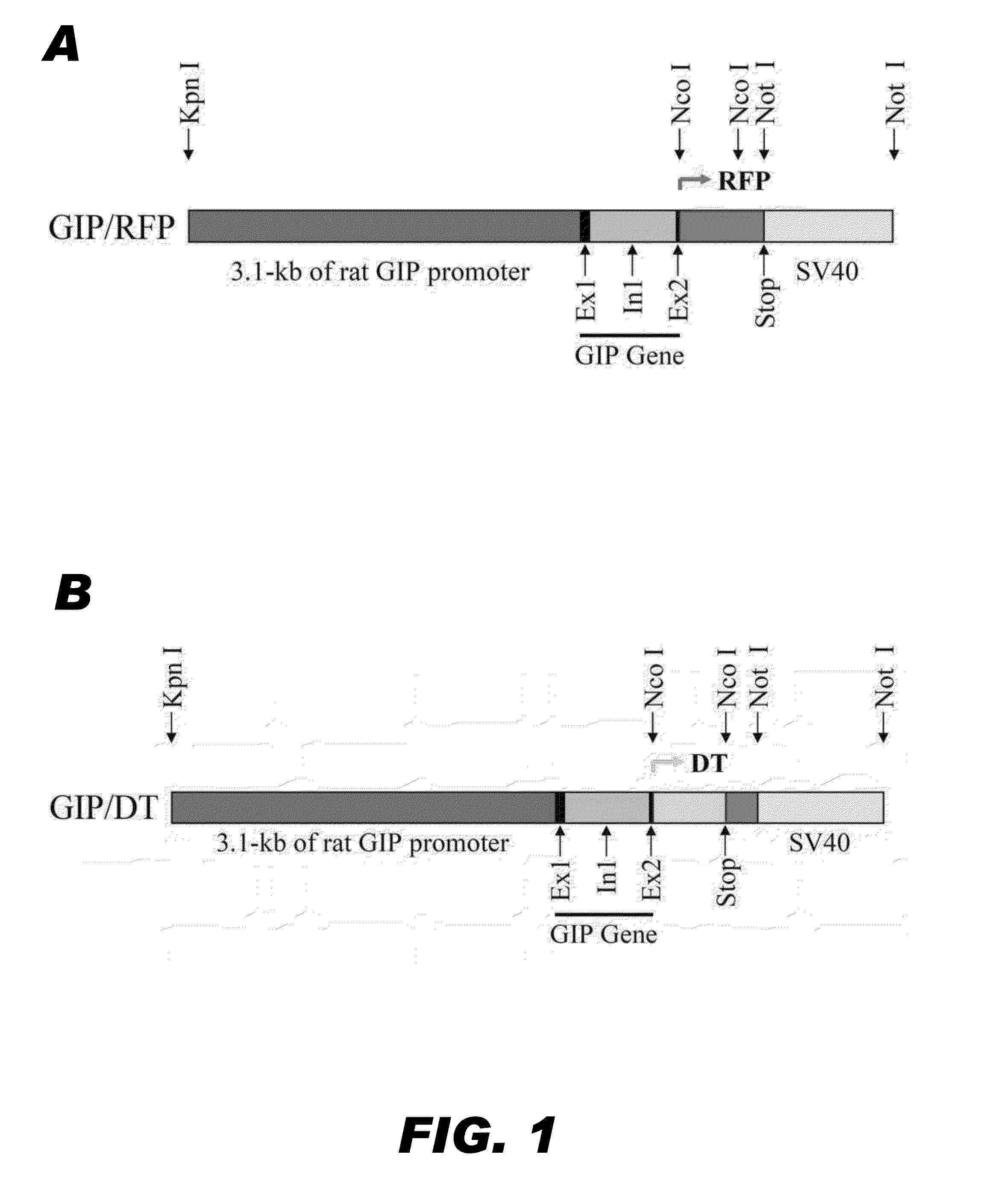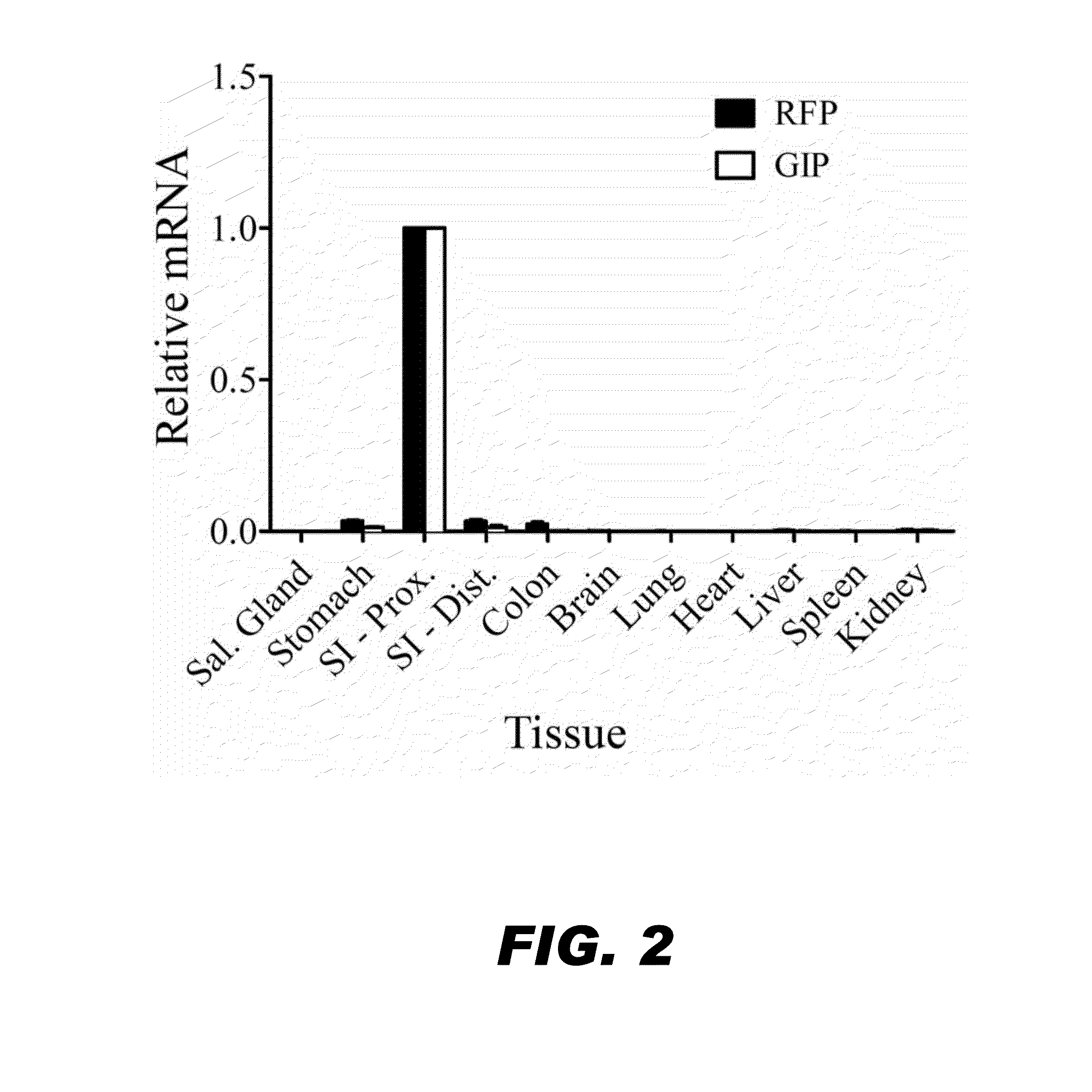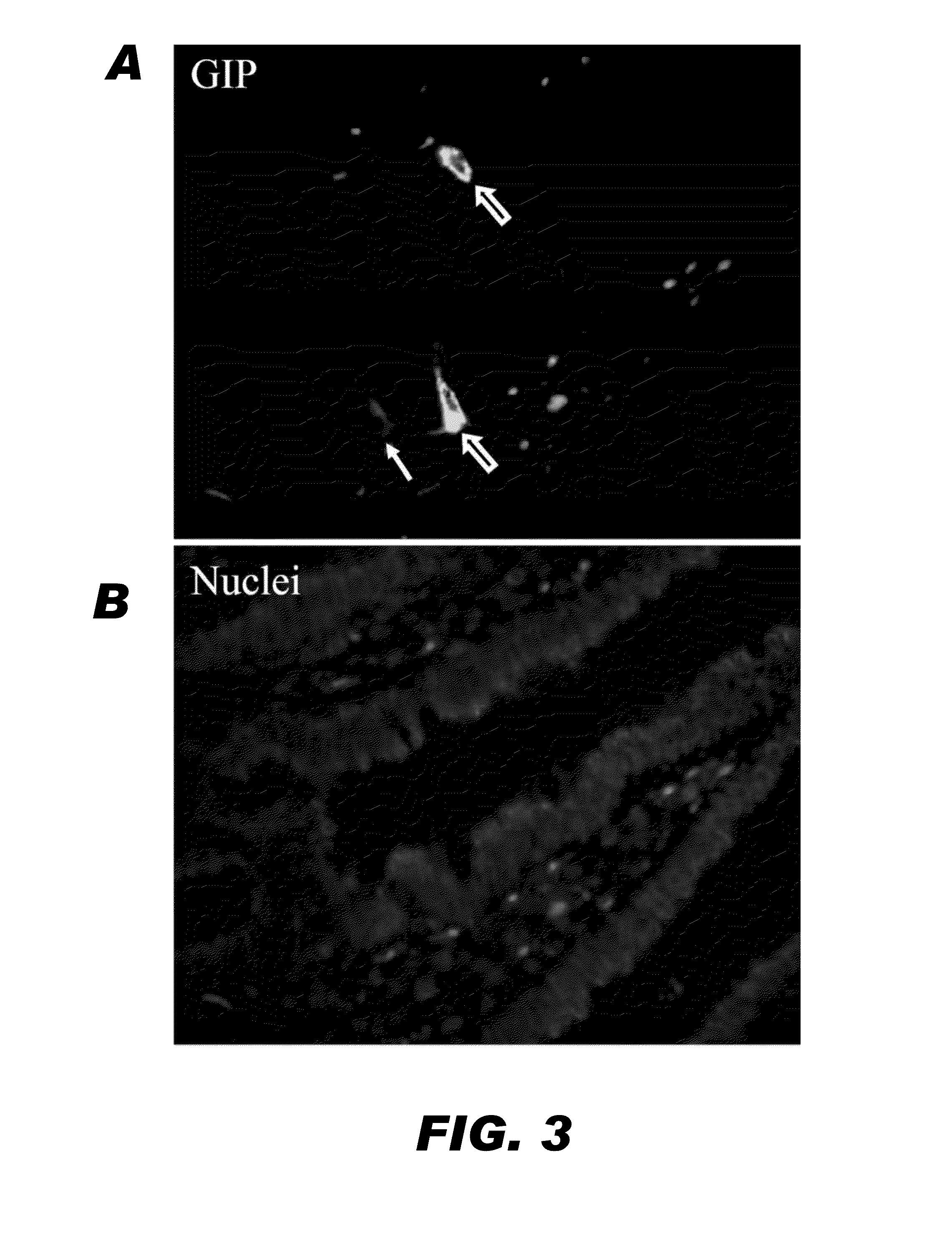Methods and compositions for modulating insulin regulation
a technology of insulin secretion and composition, applied in the direction of drug composition, peptide/protein ingredient, metabolic disorder, etc., can solve the problem of not pursued potential therapeutics based on gip
- Summary
- Abstract
- Description
- Claims
- Application Information
AI Technical Summary
Benefits of technology
Problems solved by technology
Method used
Image
Examples
examples
[0094]The following examples illustrate various iterations of the invention.
examples 1-7
Background for Examples 1-7
[0095]Enteroendocrine (EE) cells are a complex population of rare, diffusely distributed hormone producing intestinal epithelial cells (1-3). Peptides and hormones secreted by EE cells play important roles in many aspects of gastrointestinal and whole animal physiology (4-6). There are at least 16 different sub-types of EE cells based upon the major product(s) synthesized and secreted by individual cells (1). Several EE cell products including GIP, glucagon-like peptide 1 (GLP-1), ghrelin, cholecystokinin (CCK), and peptide tyrosine tyrosine regulate food intake and / or degree of adiposity (7-11).
[0096]GIP is produced predominantly by K cells located in the proximal small intestine and is secreted immediately after ingestion of a meal (4,5,12,13). GIP release is regulated by nutrients in the intestinal lumen, but not by those in the blood (4,6,13,14). Glucose (12,15,16), protein hydrolysates (17), specific amino acids (18), and fat (19) are major GIP secret...
example 1
Regulatory Eements from the GIP Promoter and Gene Confine Transgene Expression to GIP-Producing Cells In Vivo
[0113]DT-mediated ablation of GIP-producing cells requires DNA regulatory elements that confer proper transgene expression. It was previously reported that 2.5-kb of the rat GIP promoter drives human insulin transgene expression specifically in K cells of transgenic mice (56). We generated multiple lines of transgenic mice using a similar construct and noted inappropriately high levels of human preproinsulin transcripts in the stomach of transgenic mice. Thus, a transgene containing additional regulatory sequences from the rat GIP promoter and gene was prepared (FIG. 1) and then used to drive RFP expression in transgenic mice. Real time PCR using RNA prepared from multiple tissues revealed that relative levels of endogenous GIP transcripts and transgene encoded RFP mRNAs are very tightly correlated. Furthermore, detectable levels of both gene products were observed only in th...
PUM
| Property | Measurement | Unit |
|---|---|---|
| body weight | aaaaa | aaaaa |
| weight gain | aaaaa | aaaaa |
| weight | aaaaa | aaaaa |
Abstract
Description
Claims
Application Information
 Login to View More
Login to View More - Generate Ideas
- Intellectual Property
- Life Sciences
- Materials
- Tech Scout
- Unparalleled Data Quality
- Higher Quality Content
- 60% Fewer Hallucinations
Browse by: Latest US Patents, China's latest patents, Technical Efficacy Thesaurus, Application Domain, Technology Topic, Popular Technical Reports.
© 2025 PatSnap. All rights reserved.Legal|Privacy policy|Modern Slavery Act Transparency Statement|Sitemap|About US| Contact US: help@patsnap.com



